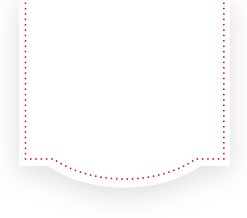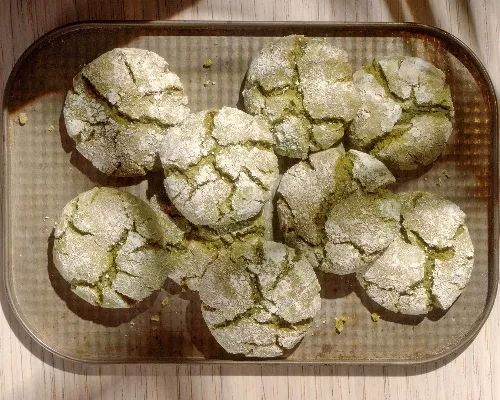Step 1
Preheat oven to 325°F (163°C).
Step 2
With a pencil or marker, draw an 8- or 9-inch circle in the centre of a sheet of parchment paper. Line a baking sheet with that parchment paper, flipping the paper over so that the marking is on the underside.
Step 1
In the bowl of a food processor, combine the Redpath® Golden Yellow Sugar, the Redpath® Special Fine Granulated Sugar, and cornstarch. Process until the granules of both sugars are fine, and the cornstarch is thoroughly mixed into the sugars; the finer the sugar granules, the more readily the granules dissolve into the egg whites. Set aside. Note: let the sugars and cornstarch settle before opening the lid.
Step 2
Add the egg whites to the bowl of a stand mixer fitted with the whisk attachment (see Chef’s Tips). Whisk at medium-low speed until soft peaks form (see Chef’s Tips). When they are at that stage and the mixer is still on, drizzle in the vinegar. Slowly increase the speed to medium and whip for a few seconds until the vinegar is incorporated.
Step 3
While the mixer is on, slowly add about a tablespoon of the brown sugar mixture to the egg whites. Wait at least 30 seconds to allow the sugar to incorporate before sprinkling in another tablespoon (see Chef’s Tips). Scrape down the sides and edges of the bowl with a clean rubber spatula to ensure all the meringue and granules of sugar are incorporated. Repeat the process until all the sugar is added.
Step 4
Gradually increase the speed to medium-high after all the sugar has been incorporated. Whip until egg whites are smooth, thick, glossy, and stiff peaks form; about 5 minutes. Ensure all sugar is dissolved by rubbing a small amount of meringue between your fingers (see Chef’s Tips). If still granular, reduce to medium speed and continue to whip until no longer gritty; watch closely as meringue can over-whip in seconds.
Step 5
Place a small dab of meringue at each corner of the parchment paper to secure the paper to the baking sheet.
Step 6
Working quickly, gently mound about a third of the brown sugar meringue into the centre of the circle drawn on the parchment paper. Gently spread to the shape and size of the circle using a large offset spatula. Add another third of the meringue, being careful not to deflate the volume. Transfer the remaining meringue on top of the rest of the meringue. Quickly smooth out the meringue. Aim for a slightly domed shape no higher than 2 or 3 inches or risk cracking.
Step 7
Using the tip of a small offset spatula, make vertical or gently sloping ridges up the sides of the dome towards the middle of the mound. Sweep the tip of the spatula from the base of the pavlova to the top of the dome, creating long divots that are about ½-inch deep. Ridges will become less defined as the pavlova bakes, as it tends to puff and smooth out slightly. Repeat process until the entire pavlova is ridged.
Step 8
Clean off the small offset spatula and create a wide, shallow dent in the middle of the dome by gently pushing down and turning the baking sheet.
Step 9
Place the baking sheet into the preheated oven, being careful not to slam the oven door shut. Immediately reduce heat to 225°F (107°C) and bake for an hour and a half; do not open the oven door during the baking process. Turn off the oven and allow the pavlova to cool completely in the oven with the door shut; 6 hours to overnight (preferably). To ensure that the pavlova slowly cools down, turn on the oven light once you turn off the oven. The light emits a small amount of heat and prevents a sudden drop in temperature. Keep the light on for 30 minutes after the oven has been turned off; it can be turned off for the remaining 5+ hours.
Step 10
Once completely cooled, serve immediately or place into an airtight container lined with parchment paper for up to 2 days; do not place into the fridge or freezer.
Step 1
Gently peel the parchment paper from the bottom of the completely cooled pavlova; it should come off easily. Carefully place the pavlova onto a serving plate.
Step 1
In a medium bowl, combine the sliced strawberries, raspberries, and blueberries with the Redpath® Golden Yellow Sugar. Mix to evenly coat the berries with the sugar and set aside to macerate.
Step 2
In the bowl of a stand mixer fitted with the whisk attachment (see Chef’s Tips), whip the whipping cream on medium speed until slightly thickened.
Step 3
Sprinkle in the Redpath® Icing Sugar and vanilla extract, if using. Continue whipping on medium to medium-high speed until cream is thick and smooth and just begins to hold its shape when mounded; do not beat until stiff peaks form.
Step 4
Just before serving, gently spread the cream on top of the pavlova. Carefully top the cream with the mixed berries. If desired, garnish with a dusting of icing sugar, a sprinkling of lemon zest, edible flowers, and/or thyme or basil leaves.
Step 5
Use a sharp chef’s knife to cut wedges. Serve immediately.

*Make the pavlova the night before serving or early in the morning of the day that you plan on serving it to allow the pavlova time to cool completely.
*Ensure all ingredients are at room temperature before proceeding with the recipe.
*If you prefer, use 1 teaspoon (5 ml) lemon juice or ½ tsp (2 grams) cream of tartar in place of the white vinegar.
*Omit the pure vanilla extract from the whipped cream if a pure white cream is desired. Alternatively, switch the flavouring to clear vanilla extract. Pure almond extract (note that the dessert will no longer be nut-free if using this alternative) or pure lemon or orange extract can also be used in place of vanilla. If using any of these pure extracts, reduce the amount used to about ¼ to ½ teaspoon (1 to 2 ml) as they tend to be quite strong. For floral notes, omit the vanilla extract and replace with 1 teaspoon (5 ml) of rose or orange blossom water.
*Thoroughly wash the bowl of the stand mixer and whisk attachment with warm, soapy water, rinse well, and completely dry before whipping the egg whites. Alternatively and/or additionally, wipe down the bowl and whisk with white vinegar or lemon juice to get rid of any potential grease from both.
*Soft peaks are the first stage of whipping egg whites. This is when the whites have transformed from large “soapy bubbles” to foamy and white, and the bubbles are uniform in size. When a whisk is lifted from the whites, the tips of the peaks should be soft and flop over.
*Adding sugar too quickly or beating the egg whites at too high a speed may make the egg whites unstable and/or lose volume. Do not increase the speed to high when whipping egg whites, as this will result in the egg whites arriving at the stiff peaks stage before all the sugar has completely dissolved.
*Any undissolved sugar granules can cause the pavlova to “weep” and collapse after cooling. Ensure that the sides are scraped during the whipping of the whites. If you do notice when transferring the meringue from the bowl to the parchment paper that there are edges that weren’t scraped throughout the process, do not scrape those areas onto the mound on the parchment paper. Leave those spots in the bowl.
*Chill the stand mixer bowl and whisk attachment for at least 15 minutes before whipping cream.
*Any seasonal berries and fruits can be used to top the pavlova (e.g. raspberries, blueberries, cherries, fresh mango, kiwis, figs, cranberries).
*Redpath® Dark Brown Sugar can be substituted for the Redpath® Golden Yellow Sugar. Note that the resulting pavlova may have a more pronounced caramel flavour and darker colour than the original recipe.











